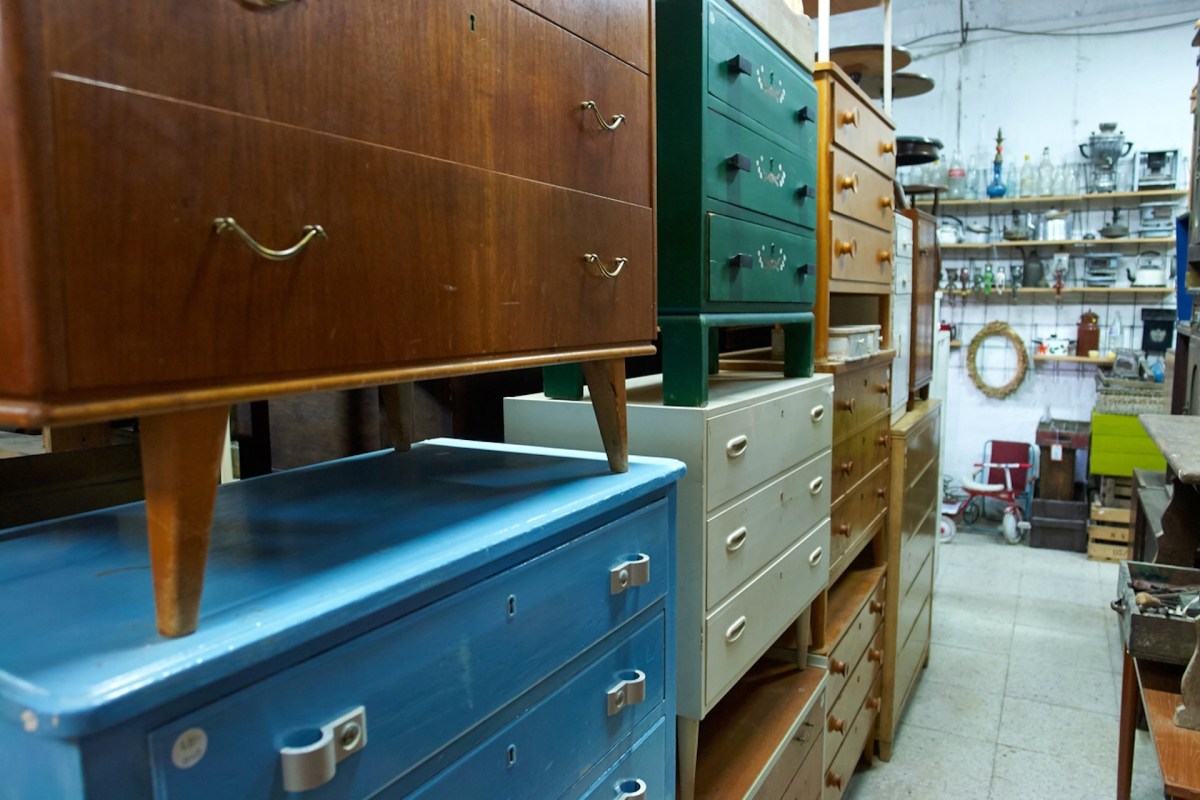Every year Americans throw away 24 billion pounds of furniture, a lot of which is created with materials that'll stay in landfills for a very long time.
Part of why so much furniture is thrown away is because of a growing culture of "fast furniture." Like fast fashion, this trend fills American households with low-quality, trendy items that don't last long.
Booting this fast furniture trend can be quite lucrative (in the thousands of dollars) over the long run. So, how exactly can we keep our living spaces stylish without breaking the bank or overflowing our landfills? Read on for some simple tips.
When you're ready to retire old furniture
Instead of immediately taking an old piece of furniture to the side of the road, first see if it can be rehabbed. There are a ton of tips and tricks out there to restore any piece of furniture that has seen wear and tear.
For leather items, some furniture salve can work wonders, restoring shine, reducing cracks, and increasing a piece's longevity. With the proper recommended care — using the salve twice a year — a leather sofa can last nearly three times as long as a fabric one, meaning one inexpensive bottle of salve can go a long way.
When pets scratch up your furniture made with fabric, the practice of visible mending can turn a piece once destined for the landfill into a stunning upgrade.
Visible mending doesn't require that you be a knitting or embroidery whiz — although those are popular ways to rehab pieces. Pinning or gluing on decorative patches can also work, as demonstrated in this stunning, formerly cat-scratched sofa below.
If your old chairs need some love, learning to refinish or refurbish them could save you almost $100.
YouTube and Reddit are both full of excellent hacks and tips for refinishing furniture. On the popular Reddit page r/Frugal, one DIY wizard and self-proclaimed "long-time frugal person" recommended "buying … a durable orbital sander, some simple stain/paint … to learn how to refinish furniture."
Not all furniture can be rehabbed, though. For these pieces, upcycling — or creatively reusing — can be an excellent option.
If you upcycle a third of your furniture, you could save nearly $1,200 over a decade. For example, check out this incredible upcycling project that turned a broken piano into a stunning statement-piece bookshelf.
When you need new furniture
Of course, it's not reasonable to assume that everyone has the skills and tools to rehab or upcycle furniture. So, if you're looking for new furniture, there are a few rules to stick by to reduce your spending and environmental impact.
First, try to see if you can get secondhand furniture. Not every thrift store will have the furniture you're looking for, but it definitely pays to check.
Furniture retail site Kaiyo also specializes in selling high-quality secondhand items. Not only can you find highly discounted furniture with Kaiyo, but you can also sell stuff you're looking to get rid of (while keeping it out of a landfill). Facebook Marketplace is another great place to find cheap but first-rate secondhand furniture.
Second, if you're buying new pieces, try to get high-quality items that will last. Fast furniture will almost certainly be cheaper at the store, but since it lasts a fraction of the time, you'll be way behind when the low-quality items fall apart.
Finally, research and find some eco-friendly home decor brands you love. These are companies that use fewer harmful chemicals, better materials, and often have sustainability certifications. Some of these brands include Etsy Reclaimed Furniture, Masaya and Co., and JoyBird.
Join our free newsletter for easy tips to save more, waste less, and help yourself while helping the planet.









